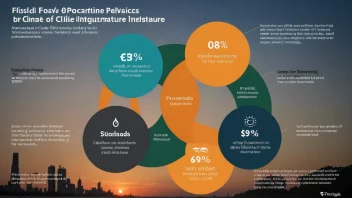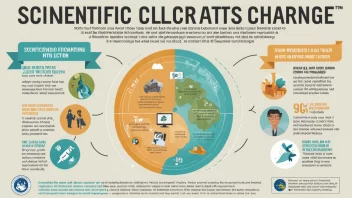The circular economy is a transformative approach that redefines the way we think about production, consumption, and waste. Unlike the traditional linear economy, which follows a 'take-make-dispose' model, the circular economy emphasizes sustainability by promoting the continual use of resources. This shift is crucial in addressing the pressing environmental challenges we face today.
At its core, the circular economy seeks to minimize waste and make the most of available resources. This can be achieved through various strategies, including reusing products, recycling materials, and designing for longevity. By adopting these practices, businesses and consumers alike can contribute to a more sustainable future.
One of the key benefits of the circular economy is its potential to reduce environmental impact. For instance, by recycling materials instead of extracting new resources, we can significantly decrease greenhouse gas emissions associated with mining and manufacturing. Additionally, products designed for reuse or refurbishment can extend their lifecycle, thereby reducing the demand for new goods and the waste generated from discarded items.
Moreover, the circular economy can foster innovation and create new business opportunities. Companies that embrace circular principles often find that they can reduce costs and improve efficiency. For example, businesses that implement take-back schemes for their products can recover valuable materials and reduce their reliance on virgin resources. This not only benefits the environment but can also enhance a company's reputation and customer loyalty.
In the realm of technology and engineering, advancements are being made to support the circular economy. Innovative materials, such as biodegradable plastics and sustainable alternatives to traditional materials, are being developed to facilitate recycling and reduce waste. Additionally, digital technologies, such as the Internet of Things (IoT), can help track products throughout their lifecycle, making it easier to manage resources efficiently.
However, transitioning to a circular economy is not without its challenges. It requires a fundamental shift in mindset from both consumers and businesses. Education and awareness are critical in encouraging individuals to embrace sustainable practices, such as repairing items instead of discarding them. Policymakers also play a vital role in creating frameworks that support circular initiatives, such as incentives for recycling and regulations that discourage waste.
In conclusion, the circular economy presents a promising solution to some of the most pressing environmental issues of our time. By rethinking our approach to production and consumption, we can reduce waste, lower greenhouse gas emissions, and create a more sustainable future. As we continue to explore and implement circular practices, it is essential for everyone—businesses, consumers, and policymakers—to collaborate in building a more resilient and environmentally friendly economy.






